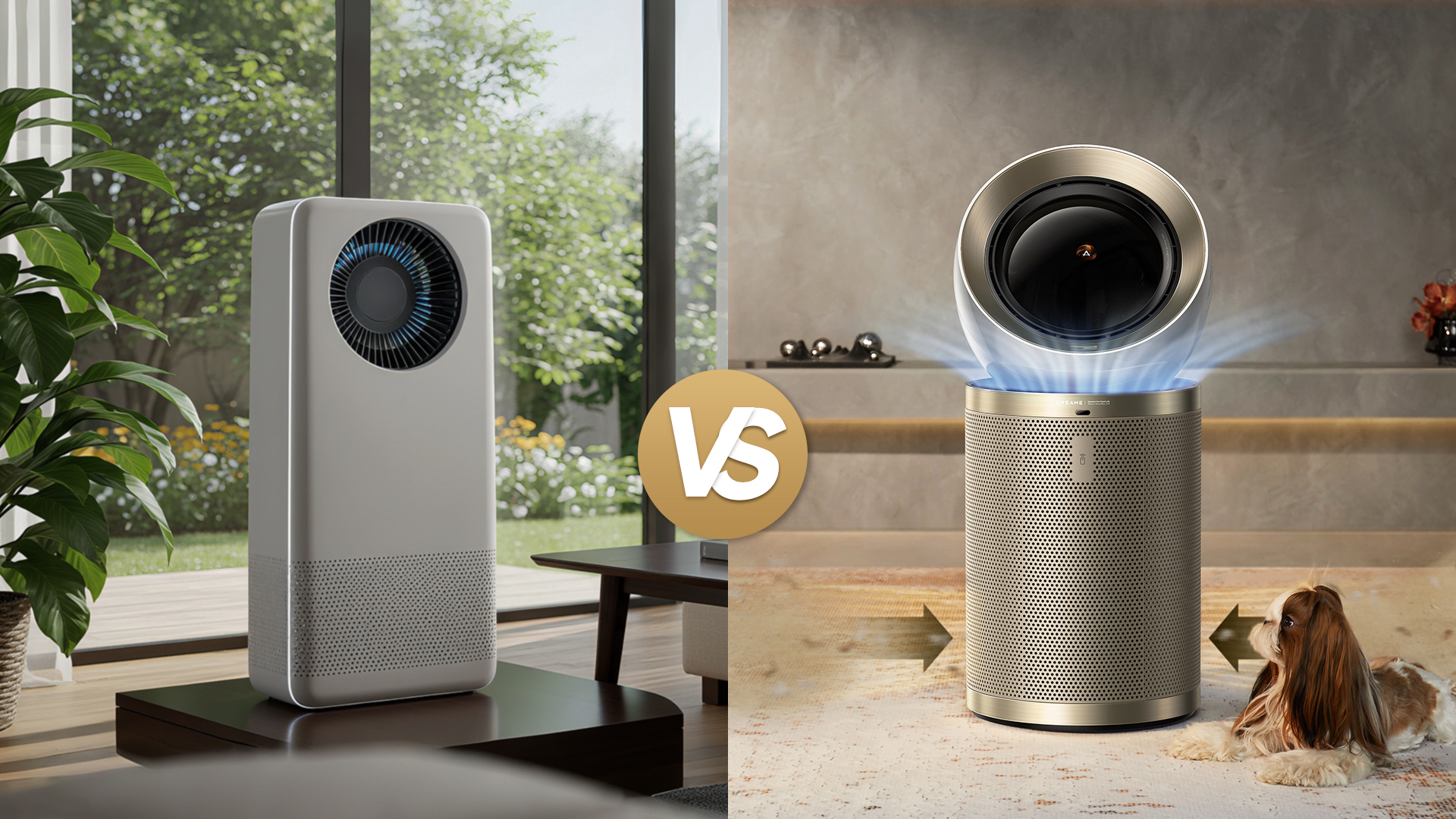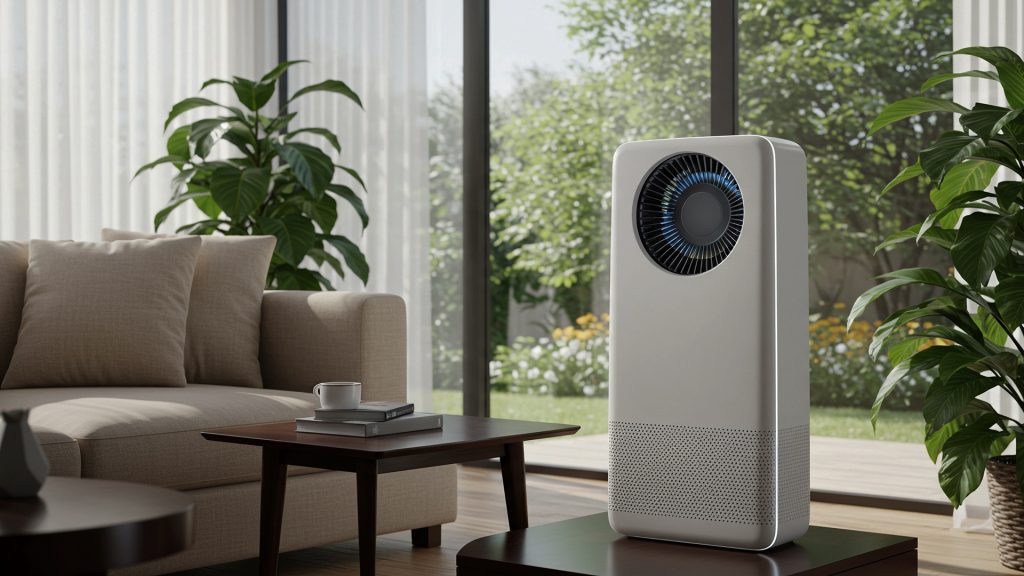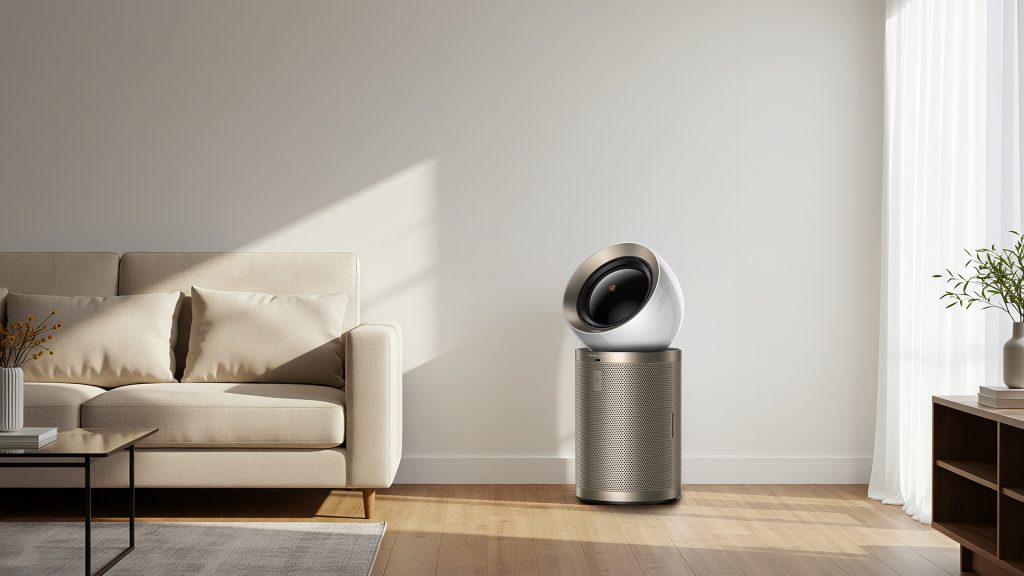
Do you wish to improve your indoor air quality? Then you must be looking up options for an air cleaner or an air purifier. But which one should you get? While both air cleaners and air purifiers sound the same, they are often used interchangeably. However, there are key differences in their functionality, technology, and use cases.
“Air cleaner” is a general term for any device that filters out airborne particles. “Air purifier,” on the other hand, is a more advanced device that not only captures particles but also targets gases, odors, and microorganisms using additional technologies.
This blog breaks down the key differences between an air cleaner and an air purifier so that you can make an informed decision on which device to choose.
Table of Contents
- What Is an Air Cleaner?
- What Is an Air Purifier?
- Air Cleaner or Air Purifier? A Quick Side-by-Side Comparison
- Which One Should You Choose?
- Conclusion
What Is an Air Cleaner?
An air cleaner is a simple device, a fan plus a filter, that pulls room air through the unit to remove particles like dust, pollen, pet dander, and (with the right filter) fine smoke. Typically, using mechanical filtration.

Common examples you’ll find:
- HEPA air cleaners: Best for fine particles
- Basic mesh/MERV filters: Capture larger dust and hair, budget-friendly
- Electrostatic air cleaners: Use an electric charge to trap particles, and check that they’re ozone-free.
Air cleaners for small rooms, in particular, focus on particle removal, have simpler technology, and are quite affordable. They are ideal for basic air quality needs, such as reducing visible dust or allergens in smaller spaces.
However, most air cleaners may not effectively address gases, odors, or microorganisms.
| Pros of Air Cleaners | Cons of Air Cleaners |
| Removes dust, pollen, and pet dander | Doesn’t remove gases or odors |
| Simple and affordable | Limited effectiveness against microorganisms |
| Low maintenance | Best for small areas only |
What Is an Air Purifier?
Air purifiers are devices that actively clean a wider range of pollutants, including particles, gases, odors, and sometimes pathogens, using technologies like HEPA, activated carbon, UV-C light, or plasma ionization.

Common examples you’ll find:
- Portable room purifiers: Typically use a multi-layer system with HEPA and activated carbon filters to remove allergens, dust, and odors
- Whole-house purifiers: Integrated with home HVAC system
- Medical-grade purifiers
An air purifier for large rooms has many more advanced features than simple air cleaners. It features multi-stage filtration, smart sensors, and app connectivity. It’s ideal for allergy sufferers, homes with pets, or environments with smoke, VOCs, or bacteria.
| Pros of Air Purifiers | Cons of Air Purifiers |
| Removes particles, gases, odors, and some pathogens | More expensive than basic air cleaners |
| Advanced features and multi-stage filtration | Higher maintenance costs (filter replacements) |
| Great for allergies, pets, and smoke | Can be larger and noisier |
Air Cleaner or Air Purifier? A quick side-by-side Comparison
Here’s a quick feature rundown, so you can match your needs to the device that works best.
| Feature | Air Cleaner | Air Purifier |
| Primary Function | Removes larger airborne particles like dust, pollen, and pet dander | Targets gases, odors, sometimes pathogens, and all particles that an air cleaner can handle. |
| Filtration Technology | Basic mechanical filtration (e.g., HEPA or mesh filters) | Multi-stage systems with HEPA, activated carbon |
| Use Cases | Small rooms, basic allergen reduction, visible dust control | Homes with pets, allergy sufferers, environments with smoke, VOCs, or bacteria |
| Cost | Generally budget-friendly | Higher upfront investment |
| Maintenance | Low-cost, simple filter changes | Higher costs due to varied filter replacements |
Air cleaners are more budget-friendly and effective for controlling simple dust or allergens in smaller spaces, but their capabilities are limited. Air purifiers, on the other hand, offer comprehensive solutions for complex air quality issues, employing multiple filtration methods to address particles, gases, odors, and microorganisms. Ultimately, the more comprehensive and lasting health benefits provided by a high-quality air purifier often outweigh the initial cost.
Modern air purifiers, like the Dreame AirPursue PM20, show how far the technology has evolved, offering smart features such as motion detection, real-time air quality monitoring, and app control.
Which One Should You Choose?
The choice between the two devices depends on your needs:
- Air Cleaner: Best for budget-conscious users with basic needs, such as reducing dust in a small room.
- Air Purifier: Ideal for those with allergies, asthma, pets, or concerns about odors and VOCs.
The Dreame AirPursue PM20 features Even Purification Technology and a 4-layer filtration system that effectively captures contaminants and dispenses clean air throughout the room. It also includes smart controls, motion detection, and quiet operation, making it both efficient and convenient for daily use.

You should always research the device specifications to match specific air quality goals and room size for the best results.
Conclusion
In short, an air cleaner for the home is a broad term for any device that removes contaminants from the air, while an air purifier offers a more advanced approach, targeting a wider range of pollutants for deeper, more comprehensive cleaning.
Choosing between the two means carefully considering factors such as room size, existing health concerns, presence of pets, and desired smart features. The right choice can significantly improve your indoor environment and overall well-being.
For more guidance, practical tips, and insights on air purifiers, air quality solutions, and keeping your home fresh year-round, visit the Dreame AirPursue blog.